


Creative Solutions For Limited Space

In today's fast-paced world, the trend of downsizing and simplifying our lives has led to an increasing number of people embracing small home living. While smaller homes offer numerous benefits, they often present a challenge when it comes to storage space. However, with some creativity and strategic planning, you can maximize storage in small homes and make the most of every square inch.
1. Embrace Vertical Space
One of the most effective ways to increase storage in a small home is by utilizing vertical space. Install tall bookshelves, wall-mounted cabinets, and floating shelves. These not only provide additional storage but also draw the eye upward, creating a sense of height and spaciousness.
2. Multifunctional Furniture
Invest in furniture that serves multiple purposes. Sofas with hidden storage, beds with built-in drawers, and coffee tables with lift-up tops are just a few examples of multifunctional pieces that can help you declutter your space. These items provide hidden compartments for your belongings, reducing the need for extra storage units.
3. Underutilized Spaces
In small homes, every nook and cranny counts. Look for underutilized spaces, such as the area under the stairs, beneath the bed, or inside closets. These spaces can be transformed into storage solutions like built-in shelves, pull-out drawers, or hanging racks.
4. Declutter Regularly
Living in a small home requires a commitment to decluttering regularly. Go through your belongings and be ruthless in your decision to keep, donate, or discard items that you no longer need or use. The less you have, the easier it is to organize and store what remains.
5. Wall Hooks And Pegs
Maximize storage by installing hooks and pegs on your walls. These can be used for hanging coats, hats, bags, and even kitchen utensils. By keeping items off the floor and neatly organized on the walls, you free up valuable floor space.
6. Utilize The Space Above Cabinets
In the kitchen, the space above your cabinets is often wasted. Use decorative baskets or boxes to store items that are used less frequently, like small appliances or oversized serving dishes. This not only adds storage but also lends a stylish touch to your kitchen.
7. Rolling Carts And Trolleys
Portable storage solutions like rolling carts and trolleys are versatile and can be moved around as needed. Use them as kitchen islands, bar carts, or additional bathroom storage. Their mobility makes them an excellent choice for small spaces.
8. Clear Storage Bins
For items that need to be stored away, clear storage bins are a lifesaver. They allow you to see what's inside without having to open each container, making it easier to find and access your belongings.
9. High-Reach Storage
Don't forget to maximize space high up in your closets. Install high shelves or use stackable containers to make use of every inch, from floor to ceiling. These shelves are perfect for seasonal items or things you don't need daily access to.
Living in a small home can be a rewarding experience with the right storage solutions. By embracing vertical space, multifunctional furniture, and underutilized areas, you can make your small space feel more spacious and organized. Regular decluttering, wall hooks, and clever use of space above cabinets can further help you achieve your storage goals. Small homes can be just as comfortable and convenient as larger ones with a bit of creativity and smart storage planning.



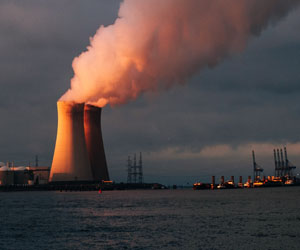

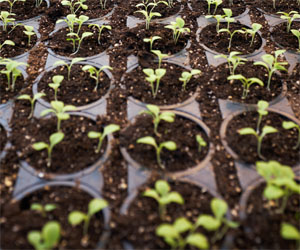
Nurturing A Sustainable Tomorrow
 Reduce, Reuse, Recycle: The famous "Three R's" serve as the foundation of eco-conscious living. Reducing waste through mindful consumption, reusing items when possible, and recycling materials are essential practices that help divert waste from landfills and conserve valuable resources.
Reduce, Reuse, Recycle: The famous "Three R's" serve as the foundation of eco-conscious living. Reducing waste through mindful consumption, reusing items when possible, and recycling materials are essential practices that help divert waste from landfills and conserve valuable resources.
Energy Efficiency: Reducing energy consumption not only saves money but also reduces greenhouse gas emissions. Simple steps like using energy-efficient appliances, sealing drafts in homes, and turning off lights and electronics when not in use can make a significant difference.
Sustainable Transportation: Opting for eco-friendly modes of transportation, such as biking, carpooling, or using public transit, can help reduce air pollution and the carbon footprint associated with personal travel.
The Looming Crisis
 Understanding Water Scarcity
Understanding Water Scarcity
Water scarcity is not simply a lack of water; it is a condition where the demand for water exceeds the available supply or when the quality of water is compromised to the point of being unusable. It is a complex issue with far-reaching consequences:
1. Impact On Human Health: In regions where access to safe drinking water is limited, water scarcity can lead to waterborne diseases, malnutrition, and reduced quality of life.
2. Agricultural Consequences: Agriculture is the largest consumer of water globally. Water scarcity can result in crop failure, food shortages, and reduced income for farmers.
3. Economic And Social Disparities: Vulnerable communities often bear the brunt of water scarcity, as they lack the resources to adapt or mitigate its effects.
Causes Of Water Scarcity
Water scarcity can be attributed to several key factors:
1. Population Growth: As the global population continues to increase, so does the demand for water, for consumption, agriculture, and industry.
Balancing Rising Energy Demands
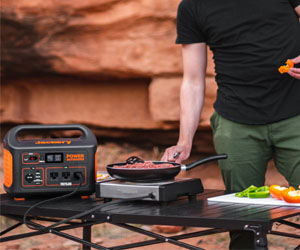 The Growing Energy Demands
The Growing Energy Demands
The primary driver of escalating energy demands is population growth and urbanization, particularly in developing nations. As more people move to urban areas and access modern amenities, energy consumption naturally increases. In parallel, the proliferation of technology, from smartphones to electric vehicles, intensifies our need for electricity. In addition, industrial processes and manufacturing depend heavily on energy-intensive operations.
Energy Sources And Environmental Impact
The conventional sources of energy, such as coal, oil, and natural gas, have been the backbone of energy production for decades. However, their use has resulted in significant environmental consequences, including air pollution, greenhouse gas emissions, and habitat destruction. As a result, there is an increasing push for cleaner, more sustainable energy sources.
The Transition To Renewable Energy
Renewable energy sources, such as solar, wind, and hydropower, are being hailed as the answer to the environmental challenges associated with conventional energy sources. These renewables offer several advantages:
Balancing Prosperity And The Planet
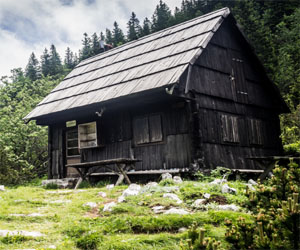 One of the key principles of sustainable development is the recognition that our planet's resources are finite. As we continue to grow in population and economic activity, it becomes imperative to manage our resources more responsibly. This involves reducing resource consumption, minimizing waste, and promoting energy efficiency. Sustainable development encourages innovation and the adoption of cleaner, greener technologies to mitigate our impact on the environment.
One of the key principles of sustainable development is the recognition that our planet's resources are finite. As we continue to grow in population and economic activity, it becomes imperative to manage our resources more responsibly. This involves reducing resource consumption, minimizing waste, and promoting energy efficiency. Sustainable development encourages innovation and the adoption of cleaner, greener technologies to mitigate our impact on the environment.
Environmental sustainability is a central pillar of sustainable development. It advocates for the conservation of ecosystems, the protection of biodiversity, and the reduction of pollution and emissions. It promotes responsible land and resource management, focusing on sustainable agriculture, forestry, and fisheries. Additionally, it calls for the reduction of greenhouse gas emissions to combat climate change, a global challenge that threatens the well-being of people and ecosystems alike.
However, sustainable development is not only about the environment. It also prioritizes social equity and inclusivity.
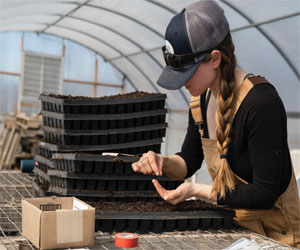 The Rise Of Greenhouse Farming
The Rise Of Greenhouse Farming
Greenhouse farming, also known as protected cultivation, has witnessed a significant surge in popularity over recent decades. This surge can be attributed to several factors, including the increasing demands for year-round crop production, the need for protection against adverse weather conditions, and the conservation of resources in a sustainable manner.
Year-Round Crop Production
One of the most notable advantages of greenhouse farming is the ability to grow crops throughout the year, regardless of the external climate. Greenhouses provide a stable and controlled environment where temperature, humidity, and light levels can be regulated to meet the specific needs of different crops. This means that farmers are not restricted to the traditional growing seasons, leading to increased crop diversity and a more reliable food supply.
Optimal Environmental Control
Greenhouses offer precise control over environmental factors. With advanced climate control systems, farmers can adjust temperature, humidity, and CO2 levels to create ideal conditions for plant growth. This level of control minimizes the impact of extreme weather events, pests, and diseases, resulting in higher crop yields and quality. It also allows for the cultivation of crops that might not thrive in local climates.
Resource Efficiency And Sustainability
Greenhouse farming is inherently resource-efficient. By retaining heat and moisture, greenhouses reduce water usage and protect against soil erosion. Additionally, the controlled environment minimizes the need for chemical pesticides, as pests are kept at bay. These sustainability benefits align with the increasing global focus on environmentally friendly farming practices.
Revolutionizing Cleaning For A Sustainable Future
 3. Eco-Friendly Packaging
3. Eco-Friendly Packaging
Green cleaning isn't limited to the contents of the cleaning products but also extends to the packaging. Innovations in packaging include the use of recycled and biodegradable materials, as well as more efficient and space-saving packaging to reduce transportation costs and emissions.
4. Smart Cleaning Appliances
Smart cleaning appliances equipped with sensors and AI technology are making cleaning more efficient and eco-friendly. These devices can optimize cleaning routines, minimizing resource waste by adjusting water usage, detergents, and energy consumption based on the specific cleaning needs. For example, robotic vacuum cleaners can map out your home and clean only the areas that need attention, saving both time and energy.
5. Waterless Cleaning Technologies
Waterless cleaning innovations are revolutionizing the way we think about cleaning tasks that traditionally require large amounts of water. Dry steam cleaning, for example, uses superheated steam to clean and sanitize surfaces without the need for chemicals or excessive water usage. These methods are not only more environmentally friendly but also more efficient.
6. Sustainable Cleaning Pads
Innovative cleaning pads made from sustainable materials like bamboo or recycled fibers are not only effective at capturing dirt and dust but are also biodegradable. They offer a green alternative to disposable cleaning pads that contribute to waste and pollution.
The Power Of Precision Agriculture
 Precision agriculture is an innovative approach to farming that utilizes technology to precisely manage resources and make data-driven decisions throughout the agricultural process. It involves the application of various technologies, including satellite imagery, GPS systems, sensors, and data analytics, to monitor and control the variables affecting crop growth, animal husbandry, and farm operations.
Precision agriculture is an innovative approach to farming that utilizes technology to precisely manage resources and make data-driven decisions throughout the agricultural process. It involves the application of various technologies, including satellite imagery, GPS systems, sensors, and data analytics, to monitor and control the variables affecting crop growth, animal husbandry, and farm operations.
Maximizing Resource Efficiency
One of the primary objectives of precision agriculture is to maximize the efficient use of resources. By collecting and analyzing data on soil health, weather conditions, and crop performance, farmers can make informed decisions regarding irrigation, fertilization, and pest control. This not only results in cost savings but also reduces the environmental impact of farming by minimizing the use of water, energy, and chemicals.
Data-Driven Decision Making
The heart of precision agriculture is data. Farmers collect a wealth of information from various sources, such as drones, sensors, and satellite imagery. This data is then processed and analyzed to provide valuable insights. These insights enable farmers to tailor their actions to the specific needs of their fields, crops, or livestock.
Making The Most Of Your Compact Living
 The Benefits Of Small Space Living
The Benefits Of Small Space Living
Before delving into the intricacies of small space planning, it's essential to understand the advantages of choosing a compact living arrangement.
Simplicity: Small homes encourage a minimalist lifestyle, reducing clutter and allowing you to focus on what truly matters.
Eco-Friendly: Smaller homes typically have a smaller environmental impact, as they consume fewer resources for heating, cooling, and maintenance.
Cost-Effective: Compact spaces are generally more affordable, both in terms of initial purchase or rent and ongoing utility costs.
Less Maintenance: With less square footage, there's less space to clean and maintain, freeing up your time for other pursuits.
The Key To Small Space Success: Planning
Small space planning is an art, and it involves thoughtful consideration of every square inch. Here are some crucial factors to keep in mind when planning for your compact living space:
Multi-Functional Furniture: Invest in furniture that serves multiple purposes. For example, a sofa that doubles as a guest bed or a dining table with storage space can help maximize your limited square footage.
Vertical Storage: Make use of vertical space for storage. Wall-mounted shelves, hooks, and cabinets can help keep your belongings organized without encroaching on your floor space.
De-Clutter: Embrace the mantra of minimalism and declutter regularly. If you haven't used an item in the past year, consider whether you truly need it. Donating or selling items that no longer serve you is a great way to keep your small space tidy.
Light Colors: Lighter paint and decor colors can make a space feel larger and more open. Consider using a neutral palette to create the illusion of spaciousness.